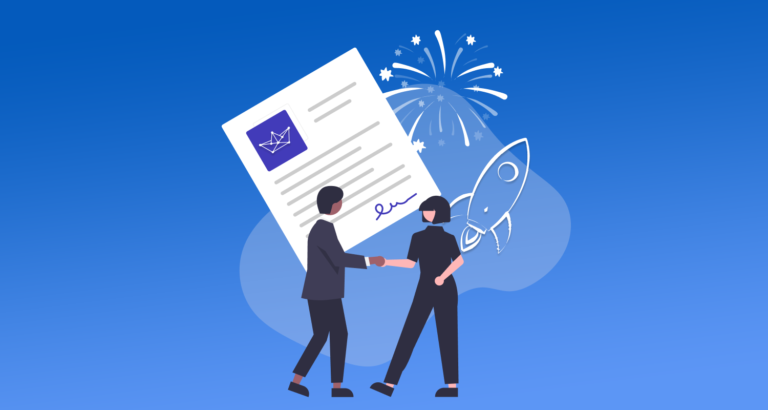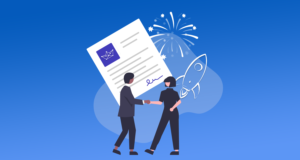The Art of Great Meetings: How to Wow Clients and Earn Their Respect



“Well, this meeting should have been an email.” Sounds familiar?
If you scroll through your LinkedIn feed, chances are, you will come across posts in which professionals whinge about useless meetings that are a complete waste of time.
They can be frustrating, but not if you organize them right. Yes, there are right ways and wrong ways of running a meeting.
In this article, we will discuss how to run a great meeting and earn your client’s respect.
1. Precisely Know the Reason Behind the Meeting
We will discuss how to run effective meetings in a minute, but first, let’s talk about how to determine whether it is even necessary or not. Any client meeting should have a reason that requires the both of you to be in the same room (or online) at the same time. For example, exchanging ideas, sharing mutual opinions, explaining complex processes, etc. are good reasons for it. However, simply sharing information and having a one-sided conversation might put your clients to sleep and make them say: “Well, this should have been an email.”
Which brings us to a very important question that you should ask yourself before you plan a meeting: “Should this be an email?” If the answer is yes, please don’t organize it. The people who know how to run effective meetings are really good at this. They know what events need a meeting, and when it should be a simple email or even a text message. So, make sure you know the exact reason. Before you learn how to run a meeting, you should know what circumstances require a meeting.
2. Choose Meeting Participants Carefully
The richest person on the planet, Jeff Bezos, has a unique way of choosing participants for a meeting. He calls it the ‘two pizza’ rule. It means that if every person cannot be fed with just two pizzas, then it means that there are way too many people in the meeting. Well, we can all be sure that the founder of Amazon must have held hundreds of conferences and knows how to run effective meetings. So, don’t be scared to use this tried and tested technique from the billionaire himself.
Now, the next step is to choose the right participants and make sure all the relevant people are invited. Yes, you will need to keep some people out of the list, but you can always ask the initial attendees to share notes with others so that everyone stays in the loop and knows what’s going on. There’s nothing to be taken personally here. It’s just that having too many people in the room will only decrease the effectiveness of the meeting for everyone.
3. Engage With Participants, and Let Them Engage With You and Each Other
As mentioned before, if participant engagement is not likely to happen, then it’s better to send an email instead of inviting people for a meeting. And if it does happen, getting clients or your own team members to open up and engage is an art in itself. Here are some tips you can use for maximum engagement in a meeting:
- Do not speak for longer than 5-10 minutes without giving someone else a chance to speak or asking questions like “All good?” or “Any questions or comments so far?”
- Ask for participants’ views on a certain point you’ve made
- Ask open-ended questions that cannot be answered with a ‘yes’ or ‘no’, but rather ignite a discussion among participants
- Reward engagement with applause or genuine compliments
- Offer your own views on the comments that participants make
Someone who doesn’t know how to run a meeting may think it’s all about them and keep on talking forever. A smart meeting organizer would not make this rookie mistake. They give others a chance to speak and offer their own views on participants’ comments.
4. Keep It Short, or Have Breaks if It’s a Long Meeting
You should never forget, it’s this. Unlike business dinners or office Xmas parties, meetings may be stressful sometimes because everyone’s brain is operating in work mode. There are no beers, no barbecues in the sun, and no Secret Santa - it’s purely work-related. It’s hard for most people to stay alert for more than 30 minutes and absorb a large amount of information so quickly. That’s why you should either keep them short or have small breaks in between.
There are several ways to ensure that meetings finish on time. First, make the expected meeting hours clear way before the meeting. Ideally, at least 24 hours prior to the meeting. Let participants know the estimated running time and if there are any breaks. You should also create a list of agendas for the meeting along with the minutes allotted for each agenda.
Here’s an example of meeting agenda items for your reference:
- Recommendations on adding the brand logo to all products (20 minutes)
- Reviewing changes in marketing strategy (30 minutes)
You can always add more items and adjust the minutes accordingly. But the main idea is to keep an eye on the clock and ensure that all relevant points are discussed in the meeting within the agreed-upon timeframe.
Final Thoughts
Any professional who wants to close more sales and impress clients must learn. First of all, decide whether a meeting is necessary or not. Sometimes, an email, text message, or a phone call is enough. The next important thing to do is to handpick participants and keep the group small. Having too many participants may ruin the meeting, so be careful with who you invite. Once the meeting is in progress, make sure you let others contribute and express their opinions, too. Participation is the essence of any meeting, so take it seriously. Finally, keep them short and concise. And if you can’t keep them short, make sure to have breaks in between.
on a weekly basis.

